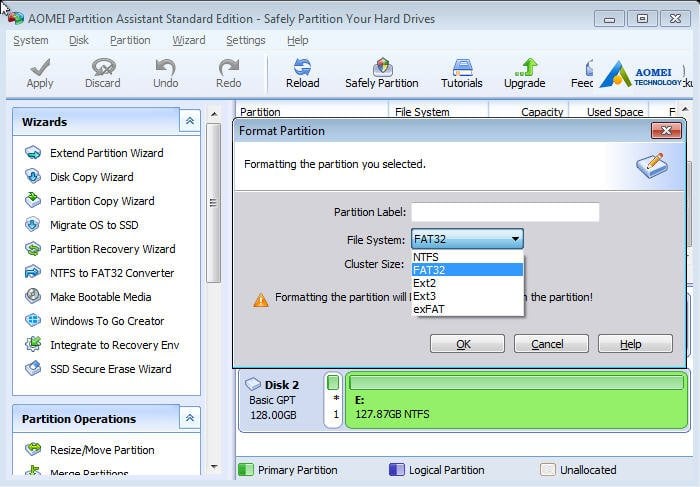
One thing to note here: you’ll need to close any open File Explorer windows before you format the drive. The truth is that FAT32 has a theoretical volume size limit of 16 TB, with a current practical limit of about 8 TB-plenty for most USB drives. Specifications put out by manufacturers on file systems as they pertain to drive size created the myth that FAT32 can only be used to format drives between 2 GB and 32 GB, and that is likely why native tools on Windows-and other systems-have that limit.

Every major operating system and most devices support it, making it great for drives you need to access from different systems. The advantage to using FAT32 is portability. If you do need those larger file sizes, you’ll need to stick with something like NTFS or exFAT. RELATED: What File System Should I Use for My USB Drive?įAT32 is a solid file system for external drives, so long as you don’t plan to use files over 4GB in size. Swap "X:" for the drive letter assigned to your USB drive.įor whatever reason, the option to format USB drives larger than 32GB with the FAT32 file system isn’t present in the regular Windows format tool. Alternatively, launch PowerShell as an Administrator and run "format /FS:FAT32 X:" in the Window to format the "X:" drive as FAT32. The device that is now gone from the list is your USB device.Use a third-party utility, like "FAT32 Format," to format larger USB drives with FAT32. Note: If you are unsure of the drive designation, unplug the USB drive temporarily before running the df command again. In this example, the USB drive is /dev/sdb1. Locate the USB in the list and find the corresponding device. The terminal prints out a list of all mounted partitions and relevant information: used space, available space, used space percentage, and the path. Open the terminal and run the following command: df Unmounting and formatting the USB drive.įollow the instructions below to format a USB drive using the terminal.The easiest and fastest way to format a USB drive in Linux is through the terminal. Windows, Mac, Linux (requires extra drivers to access)

Windows, Mac (read-only), most Linux distributionsįor internal drives and Windows system files Their main features and differences are: File System The most commonly used file systems when formatting a USB drive are:

There are many file systems in use, differing by maximum file size and operating system compatibility. Which File System to Use for USB Formatting?


 0 kommentar(er)
0 kommentar(er)
